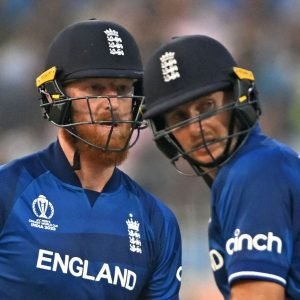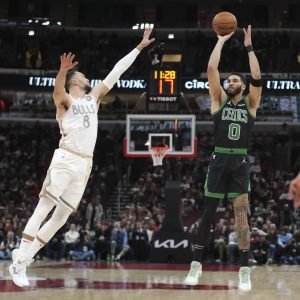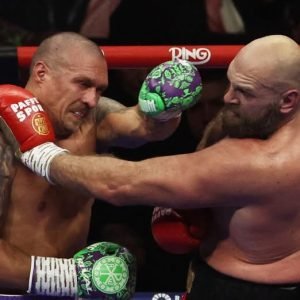
The Julius Randle experience is defined by a certain duality. Catch him for the right two-minute stretch and you’d think he’s some lefty reincarnation of LeBron, with that same blend of speed and heft, the wrecking-ball shoulder bumps, the inside-out playmaking. Catch him in the next quarter, and he’ll look like a sulky 4-year-old piloting LeBron’s body. Behind Randle’s brilliance lurked many mysteries. He’s an elite athlete by NBA standards, conditioned to the max, with rare agility to his size; somehow this never translated into even average defense. One night he’d give everything for 40 minutes and end in sweat-soaked triumph; the next game, he’d give up on the team in a thousand tiny ways.
Randle arrived in New York in a moment of the franchise’s humiliation. In the summer of 2019, the Knicks were coming off a 17-win season and had shipped off Kristaps Porzingis, the closest thing resembling a future, to Dallas. But it was billed as a move for more future. The trade cleared up two max salary slots, and “from what we’ve heard, we’re going to have a very successful offseason,” team owner James Dolan intimated in March. That July, they watched as Kyrie Irving and Kevin Durant signed deals in Brooklyn.
With all that delectable cap space, Knicks acquired the likes of Elfrid Payton, Bobby Portis, and one Julius Randle. Shame hung in the air like the aroma off the Gowanus Canal. But Randle spent five years clearing out the stink, lifting his team into surprising semi-contention, occasionally reintroducing the stink, and contributing to one genuinely good Knicks team, before he was traded to the Minnesota Timberwolves this past weekend for Karl-Anthony Towns. At first my body rejected the news, as if in an immune response. While I’ve since come around to the deal, I can recognize that initial reaction as a kind of dissociated love for this vexing but gifted player.
When he arrived, Randle was a relative unknown. His tenure with the Los Angeles Lakers had its flashes, but it was mostly that one contract year he played with the New Orleans Pelicans in 2018, with its sudden flurry of threes, that built up the intrigue. Before the Knicks brought him in as their consolation, he’d never had to run an offense as its first option. Predictably, Randle’s first campaign with the team in 2019-20 was one of turnovers and volume chucking. He was profligate with the ball, inefficient from the floor, playing directionless basketball. He was intent on spamming a spin move—a doomed, cement-footed pirouette that seemed to guarantee the other team a transition dunk—that earned him the nickname “Beyblade” among disgusted Knicks fans.
But Randle’s second season was good enough to convince those same fans that they’d stumbled into an underpaid superstar. He showed up to camp shredded, shouldered a burden with head coach Tom Thibodeau—the largest regular-season minutes total in the league—and refined his ponderous brand of bully-ball. Randle seemed to thrive in the fan-less, distraction-free pandemic games. Without warning, he became one of the best shooters alive in the midrange; he also let it rip from three, hitting 41 percent on 5.5 shots a game. He became the Knicks’ most gifted passer throughout his tenure. For these efforts, he was voted Most Improved Player and second-team All-NBA.
While Randle’s 2020-21 season is arguably the best from any Knick this millennium, it was also a lesson in how quickly the switch could flip back: That postseason, the sudden superstar was a nullity, shooting 29 percent from the field as the Knicks lost their first-round series to the Atlanta Hawks. Randle never did have a good postseason as with the Knicks, partially due to injuries, but also perhaps due to something more fundamental in his disposition.
Randle followed up his otherworldly 2020-21 by laying a season-long turd in 2021-22. He could make so many specific skills look easy, but in the aggregate, basketball never looked terribly easy for him. Knicks fans screamed at him roughly as often as they screamed for him. He was a guy at war with himself, and, taking stock of it all, it’s incredible how often he won. He pulled this team out of humiliation and into moderate respectability, and he did it with a roster that was never constructed to draw out his strengths.
Randle’s life was made harder by total redundancy with RJ Barrett, another lefty who liked to lurk in similar areas of the floor and lumber into the lane. The Knicks insisted on developing Barrett alongside Randle, despite the fact that both players performed better in lineups without the other. Randle never played alongside a center who could shoot at all, which would have been the most natural pairing with his hard-charging skillset at the four. He never got to share ball-handling duties with a league-average point guard until Jalen Brunson arrived and took over stewardship of the team. Randle, who had been the hub of the offense for so long, had to accommodate a superior talent with a similarly slow, probing style. He adjusted and eventually settled into his role as deputy: shattering a defense that Brunson had already cracked, creating a nice diet of catch-and-shoot threes for his point guard.
When OG Anunoby arrived via trade at the start of 2024, he slotted right into the lineup with his unglamorous play-finishing and punishing defense. Suddenly it was the most complete Knicks lineup of Randle’s tenure. Randle himself went down soon after with a dislocated shoulder; while he attempted to rehab in time to return for the playoffs, he settled for surgery in April, and still hasn’t fully recovered. Injuries had disintegrated that Knicks team by the second round of the playoffs, but when they lost, I felt confident that they should heal up and run back that January squad. Then the Knicks found themselves in a bind at the center position: Isaiah Hartenstein split for Oklahoma City in free agency, and Mitchell Robinson’s injury was going to carry over into the upcoming season. The vision of those January Knicks was over, replaced by a vision of Brunson in five-out spacing. The team effectively swapped out Randle for Towns, another All-NBA offensive talent with defensive and attitudinal flaws, who inspires a similar seesaw of rage and awe among fans.
Thus ends the Julius Randle era in New York. The Knicks have completely different expectations from when they were settling for Elfrid Payton and Bobby Portis in free agency. When Randle arrived, the team had won just 17 games. When he left, they’d just won 50, and that intervening progress was possible because of the burly, surly man at the four. I’ll miss the shambling drives, the smooth pull-up jumpers, the mid-air skip passes, the sloppy game-winner that spiritually sums up his Knicks tenure. Hell, I might even miss the Beyblade spin moves.






